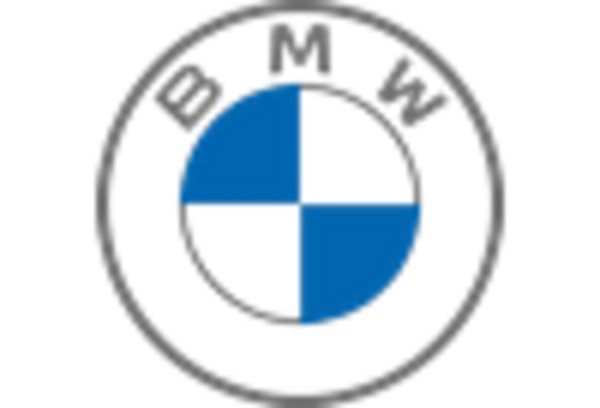Consumer Demand for Safety
Consumer demand for enhanced safety features is a critical driver in the Europe Autonomous Driverless Cars Market. As road safety remains a pressing concern, autonomous vehicles are perceived as a solution to reduce accidents caused by human error. Data indicates that approximately 90% of road accidents are attributed to human mistakes, underscoring the potential of driverless technology to mitigate these risks. The increasing awareness of safety benefits is likely to influence consumer preferences, leading to a higher acceptance of autonomous vehicles. Additionally, as manufacturers continue to showcase the safety capabilities of their autonomous models, consumer confidence is expected to grow, further stimulating market demand. This trend aligns with the broader societal push towards safer transportation alternatives.
Technological Advancements
The rapid pace of technological advancements plays a pivotal role in the Europe Autonomous Driverless Cars Market. Innovations in artificial intelligence, machine learning, and sensor technologies are enhancing the capabilities of autonomous vehicles. For instance, the integration of advanced LiDAR systems and computer vision is enabling vehicles to navigate complex environments with greater precision. As of 2025, the market is projected to grow significantly, with estimates suggesting a compound annual growth rate of over 20%. This growth is driven by the increasing demand for safer and more efficient transportation solutions, which autonomous vehicles are poised to deliver. Furthermore, the development of 5G networks is expected to facilitate real-time data exchange, further propelling the market forward.
Environmental Sustainability
The increasing emphasis on environmental sustainability is a significant driver in the Europe Autonomous Driverless Cars Market. As concerns about climate change and air pollution intensify, there is a growing demand for cleaner transportation solutions. Autonomous vehicles, particularly those powered by electric or hybrid technologies, are seen as a viable option to reduce carbon emissions. Market data suggests that the adoption of electric autonomous vehicles could lead to a substantial decrease in greenhouse gas emissions, aligning with the European Union's ambitious climate targets. Furthermore, the integration of smart traffic management systems in autonomous vehicles may optimize traffic flow, further contributing to reduced emissions. This alignment with sustainability goals is likely to enhance the attractiveness of autonomous vehicles among environmentally conscious consumers.
Government Initiatives and Funding
Government initiatives and funding are instrumental in shaping the Europe Autonomous Driverless Cars Market. Various European governments are actively investing in research and development to promote the adoption of autonomous vehicles. For example, the European Union has allocated substantial funds to support projects aimed at enhancing road safety and reducing emissions through autonomous technology. These initiatives not only provide financial backing but also create a regulatory framework that encourages innovation. As of 2025, several pilot programs and testing zones have been established across Europe, facilitating the real-world deployment of autonomous vehicles. This supportive environment is likely to accelerate the market's growth, as it fosters collaboration between public and private sectors.
Urbanization and Mobility Challenges
Urbanization and the associated mobility challenges are driving the Europe Autonomous Driverless Cars Market. As urban populations continue to grow, cities face increasing congestion and transportation inefficiencies. Autonomous vehicles offer a potential solution to these challenges by providing efficient and flexible transportation options. The market is witnessing a shift towards shared mobility services, where autonomous vehicles can be utilized for ride-sharing and public transport solutions. This trend is supported by data indicating that urban areas are projected to account for over 70% of the European population by 2030. Consequently, the demand for innovative mobility solutions is likely to rise, positioning autonomous vehicles as a key component in addressing urban transportation issues.


















Leave a Comment